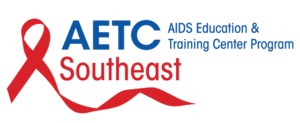
HIV and Oral Health: Citizen Scientists Take on the Challenge of Long-Haul COVID-19
By:
- Mark Schweizer, DDS MPH
Director of Development and Special Projects
Dental Director Southeastern AIDS Training and Education Center
Nova Southeastern University College of Dental Medicine
NIH Directors Blog Posted on September 3rd, 2020 by Dr. Francis Collins
Among the many longer-term health problems that have been associated with COVID-19 are shortness of breath, fatigue, cognitive issues, erratic heartbeat, gastrointestinal issues, low-grade fever, intolerance to physical or mental activity, and muscle and joint pains. COVID-19 survivors report that these symptoms flair up unpredictably, often in different combinations, and can be debilitating for days and weeks at a time. Because COVID-19 is such a new disease, little is known about what causes the persistence of symptoms, what is impeding full recovery, or how to help the long-haulers. The investigators created a survey that was divided almost equally between those who tested positive and those who tested negative. Here are some highlights.
Top 10 Symptoms: Respondents were asked to rank their most common symptoms and their relative severity. From highest to lowest, they were mild shortness of breath, mild tightness of chest, moderate fatigue, mild fatigue, chills or sweats, mild body aches, dry cough, elevated temperature (98.8-100), mild headache, and brain fog/concentration challenges. Highlighting the value of patient-led research, the team was able to assemble an initial list of 62 symptoms that long-haulers often discuss in support groups. The survey revealed common symptoms that have been greatly underreported in the media, such as neurological symptoms. These include brain fog, concentration challenges, and dizziness.
Making a Recovery: Of the 60 respondents who had recovered, the average time to recovery was 27 days. The respondents who had not recovered had managed their symptoms for 40 days on average, with most dealing with health problems for 5 to 7 weeks. The report shows that the chance of full recovery by day 50 is less than 20 percent.
Exercise Capacity: About 65 percent of respondents now consider themselves mostly sedentary. Most had been highly physically active before developing COVID-19. Many long haulers expressed concern that overexertion causes relapses
Testing. Respondents who reported testing positive for SARS-CoV-2 were tested on average earlier in their illness (by day 10) than those who reported testing negative (by day 16). The team noted that their findings parallel those in a recent published scientific study, which found false-negative rates for current PCR-based assays rose as the time between SARS-CoV-2 infection and testing increased [2]. In that published study, by day 21, the false-negative rate reached 66 percent. Only two symptoms (loss of smell and loss of taste) occurred more frequently in respondents who tested positive; the other 60 symptoms were statistically the same between groups. The scientists speculate that testing is not capturing a subset of COVID patients, and more investigation is required.
References:
- “What Does COVID-19 Recovery Actually Look Like? ” Patient-led Research for COVID-19. May 11, 2020.
- Variation in False-Negative Rate of Reverse Transcriptase Polymerase Chain Reaction-Based SARS-CoV-2 Tests by Time Since Exposure. Kucirka LM, Lauer SA, Laeyendecker O, Boon D, Lessler J. Ann Intern Med. 2020 Aug 18;173(4):262-267.
